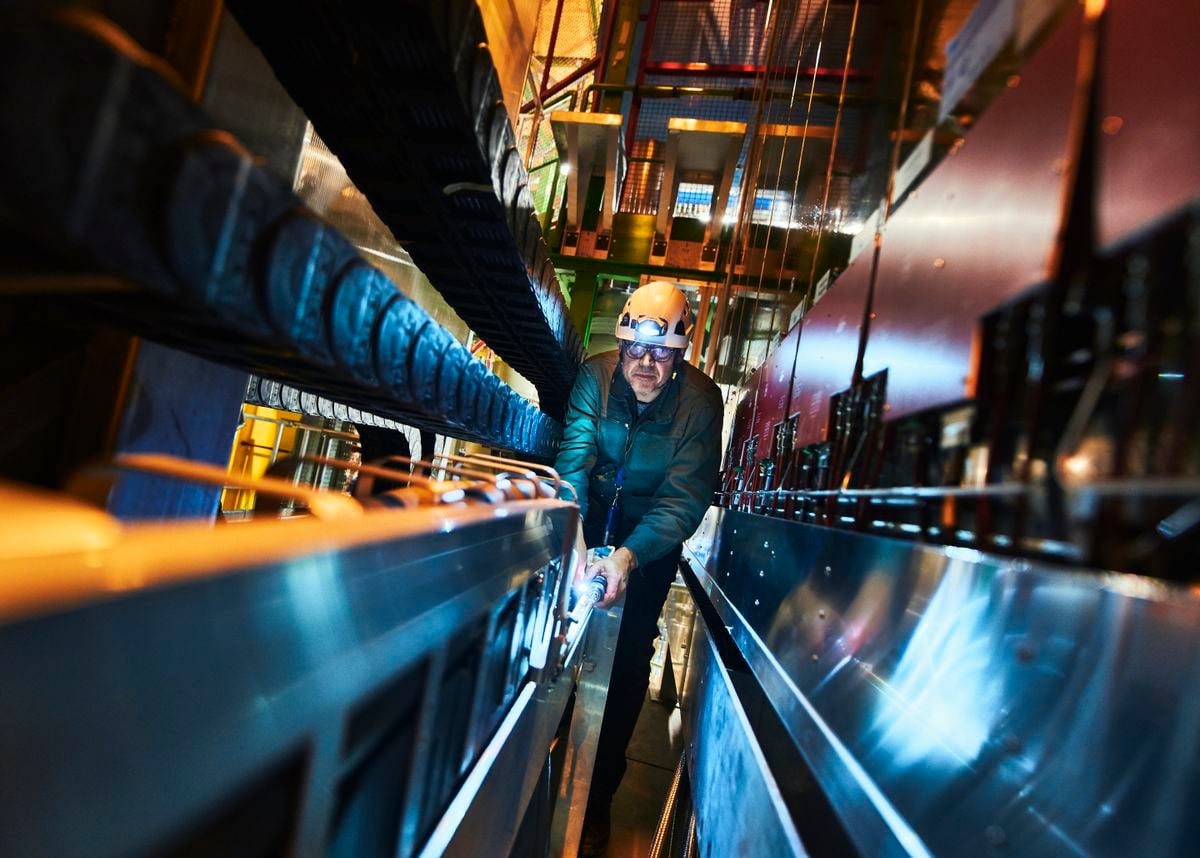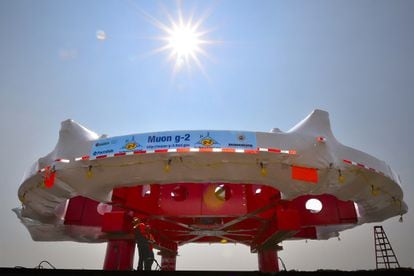The muon questions the laws of physics | Science

Two high-resolution experiments in Europe and the United States have just discovered references to particles or forces completely unknown in physics. If these anomalies were confirmed, it would be a historic discovery sought for more than half a century.
A few days ago, officials for the g-2 experiment at the Fermilab Laboratory in the US announced that after years of experiments they had discovered an anomaly in the behavior of the muon, an elemental particle with a negative charge similar to an electron. With a block more than 200 times. The observed anomaly coincides with the anomaly that was actually detected in this same experiment 15 years ago. The disagreement between theory and experimental reality still exists, and it now has greater statistical reliability, which may mean that this experiment has hinted at physical phenomena that current theories cannot explain.
“It’s a very important finding; at the moment, there is a lot of emotion trying to explain what is happening,” explains Perry Masguan, a theoretical physicist at the Institute of High Energy Physics, in Barcelona, and a member of the international collaboration that has calculated theoretical values. In as much detail as possible.
Experiments such as g-2 explore the region of small elementary particles – quarks, bosons and leptons. These are the smallest and most indivisible components of matter, the building blocks of the atoms that make up all matter that humans can see and touch.
G-2 releases beams of muons that rotate in a vacuum through a circular ring at nearly the speed of light. Void is never empty, but it is inhabited by unknown virtual particles that can interact with a muon and influence its behavior without anyone seeing it.
“There are a lot of emotions trying to explain what is happening.”
Perry Masjuan, theoretical physicist
The US experiment measures a property of a muon called a magnetic moment, which is derived from its quantum properties and manifests itself as a change in its rotation as it passes through a magnetic field. These “real” properties are compared with those predicted by the Standard Model, the set of equations formulated 50 years ago that to date have perfectly described the behavior of elementary particles. The big problem with physics is that this conventional matter makes up only 5% of the universe. The rest is dark matter and dark energy governed by particles and forces that the Standard Model cannot explain and which may be responsible for the strange anomalies observed.
The American experiment discovered a difference of one billionth – nine decimal places – between the true value of the muon’s magnetic moment and the theoretical value. “It’s a very big difference,” admits Masjwan. “Spacing like this violates the rules of the game, the laws that dominate nature,” he highlights. For example, the electron’s magnetic moment matches its theoretical value 1,000 times more precisely.
The United States and Europe are competing to be the first to discover new physics
The reliability level for an American score is 4.2 sigma – there is only 1 chance in 40,000 that the result is a coincidence. In particle physics, this amounts to new physics ‘hints’. Finding out requires five sigma, or a chance in a million, that the result is just a statistical chance.
On the same day that the Americans presented their results, another team announced a new calculation of theoretical value using an alternative technique. Results published in natureAnd the Coincides with what was observed in the Fermilab accelerator. “At this time, we theorists must come together to re-analyze our data,” Masjuan admits.
This race is also a scientifically geostrategic battle between the United States and Europe to be the first to discover new physics. The American trial collected only 6% of all the data it could collect. In about four years, they can reach five sigmas.

A few weeks before the g-2 results were announced, another experiment at the European particle physics laboratory CERN in Geneva revealed another type of anomaly also related to muons. Those responsible for the LHCb experiment installed in the world’s most powerful particle accelerator are responsible for studying the decomposition of these and other particles to see if they match those predicted by the theory. The quotient between the decay of electrons and muons should always be 1, but experiment shows a value of 0.84, indicating that there may also be hidden particles or forces affecting the result.
In this case, three sigma reliability has been reached, a chance in a thousand to be a coincidence. Importantly, this experiment has seen similar anomalies with other decays for years. “We have come to a time when we no longer see isolated trees, but a forest of aberrations, all of which correspond to the possibility of new physics,” explains Joachim Matthias, a professor at the Autonomous University of Barcelona who worked. Results of this experiment. “The announcement of the g-2 results seemed to me a bit exaggerated because the differences can disappear, but above all because there is still a discussion of theoretical calculations,” he says.
This is where scientists need to obtain millionaire grants from their governments so they can continue their experiments. In Trump-era America until just a few months ago, the announcement of the G-2 was a staple. “We are witnessing a struggle between science and government,” says Perry Masguan. “For the Americans, it was very important to get a strong result that would justify the investment,” he adds.
The results of the two experiments sparked the imaginations of physicists around the world, who scrambled to find the unknown particles that might cause these anomalies. One possible explanation is the existence of leptoquarks, particles that have so far only existed in theory. It would not be one, but many different particles that would be related to those already described by the Standard Model and which could account for the experimental observations. All physicists know that there must be a physical theory higher than the Standard Model. We may be seeing the tip of the iceberg, the beginning of a complete theory beyond what we know, ”Matthias sums up.
Other independent physicists are asking for caution. “You have to be wise to be able to claim a discovery,” says Alberto Ruiz Jimeno, of the Institute of Physics of Cantabria and a veteran researcher at Fermilab and CERN. Tony Petsch, of the Valencia Institute for Physical Physics, recalls that neither experiments will stop collecting data. “We hope to have new theoretical results in the coming months,” he explains. “You have to wait a little longer before ringing the flight bells, but in any case it is a very important result,” he adds. Luis Alvarez-Gomé, another veteran CERN physicist now at Stony Brook University in New York, is in the political race for funds. “The results of the LHCb in Europe have a better chance of becoming real, while the G-2 has to wait, despite all the publicity from the United States,” he highlights.
You can follow MATTER at The social networking site FacebookAnd the Twitter e InstagramOr, register here to receive Weekly newsletter.

“Award-winning zombie scholar. Music practitioner. Food expert. Troublemaker.”


/cloudfront-eu-central-1.images.arcpublishing.com/prisa/AHVYMMDSTZDTDBFNZ3LMFUOKNE.jpg)








